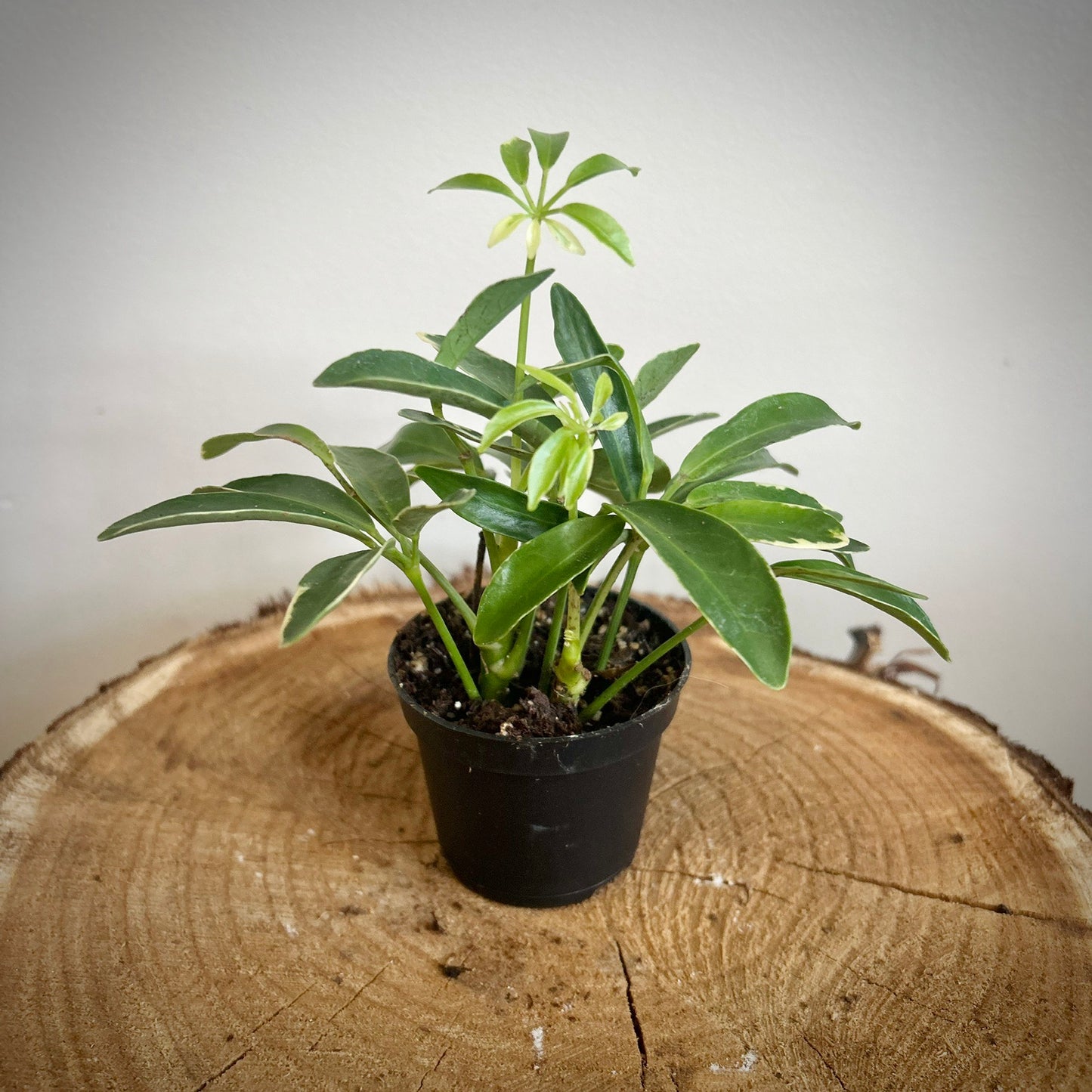Urban Ivy Houseplants
Schefflera Arboricola - Variegated Umbrella Tree
Schefflera Arboricola - Variegated Umbrella Tree
Couldn't load pickup availability
The Umbrella Plant, also known as Schefflera arboricola or Dwarf Umbrella Tree, is a popular houseplant admired for its glossy, palmate leaves that radiate like the spokes of an umbrella. Its compact growth habit and adaptability make it an excellent choice for both novice and experienced plant enthusiasts. Whether placed in a cozy corner or as a centerpiece, the Umbrella Plant adds a touch of tropical elegance to any indoor space.
Key Features:
In indoor settings, the Umbrella Plant typically reaches a height of 3–6 feet (90–180 cm) and spreads about 2–3 feet (60–90 cm) wide.
Its moderate growth rate allows it to maintain a manageable size, making it suitable for various indoor locations, including living rooms, offices, and bedrooms.
Pet Friendliness:
This plant is not pet-friendly. It contains calcium oxalates, which can be toxic to cats, dogs, and other pets if ingested. Place it out of reach of pets and small children.
Care Instructions:
Light: Prefers bright, indirect light. Can tolerate medium light conditions but may become leggy. Avoid direct sunlight, which can scorch the leaves.
Watering: Allow the top inch of soil to dry out between waterings. Overwatering can lead to root rot, while underwatering may cause leaf drop. Reduce watering frequency during the winter months.
Humidity: Thrives in moderate to high humidity. If your indoor air is dry, consider using a humidifier or placing the plant on a tray filled with pebbles and water to increase humidity around the plant.
Temperature: Ideal temperatures range between 18°C–24°C. Protect from cold drafts and sudden temperature changes.
Soil: Use a well-draining potting mix rich in organic matter. A mix designed for tropical plants or a combination of peat, perlite, and vermiculite works well.
Fertilizer: Feed monthly during the growing season (spring and summer) with a balanced, water-soluble fertilizer diluted to half strength. Do not fertilize in the fall and winter.
Pruning: Remove any dead or yellowing leaves to encourage new growth and maintain the plant's appearance. Pruning can also help control the plant's size and shape.
Repotting: Repot every 1–2 years or when the plant becomes root-bound. Choose a pot that is one size larger and ensure it has drainage holes.
Pro Tip: To encourage a bushier growth habit, pinch back the growing tips of the plant. This will stimulate branching and result in a fuller appearance.
*Please note that color may differ slightly from how it appears on your screen due to varying monitor settings.
**Please note that we will select a plant for you when you order online. Though you will not receive the specific plant in the image, we will ensure we select something comparable.

